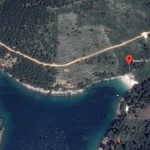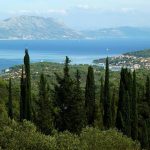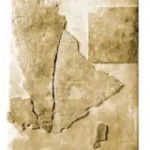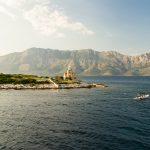As we’ve reported previously, this summer a cave was accidentally discovered in the village of Žrnovo, hamlet Postrana. Since then, preliminary investigations have been conducted in the Korčula cave, and 24 sata brings the story, written by Bogdan Blotnej.
Branko Jalžić, speleology instructor and biospeleologist tells the journalist that he was looking for any kind of bugs on the sides of the cave, when he first noticed an odd shape on a rock in the cave, 35 meters deep. His experience made him believe it was a fossil, which was later confirmed by scientists in the Croatian Natural Sciences Museum in Zagreb. He entered the cave with a group of speleologists, Damir Basar, Milan Vojnović and Gordan Polić, and they managed to descend to the bottom of the Korčula cave – at 50 meters below the surface.
As for the fossil, they were not sure who it belonged to at first, but have since been told that it probably comes from one of the fish from the Osteichthyes (bony fish) group, that has lived around 100 million years ago, during the cretaceous period, when some of the biggest dinosaurs roamed the Earth. Researchers explain that the water has probably washed the rock where the remains of the fish were found, and the hard teeth remained. In addition to this one, they found two other fossils and probably a new type of Coleoptera beetle. It was, unfortunately, not alive when it was found and was even half-consumed by a fungus, so they will have to try and find it during another expedition.
All of this was shared with the public during the 3rd natural history week in Korčula, and 18 researchers participated in the exploration of the 25 caves and pits on Korčula.
After the cave was accidentaly found by Tonči Borovac of Korčula, while digging to plant a tree, research has been taking place, and ideas have appeared how to use the cave as a tourist attraction, but without putting anyone in any risk of falling in.
In addition to the Korčula cave, there are numerous interesting formations on Korčula, including pits with salt and fresh water in them, some lakes underground and all of them need to be explored, cleaned and protected, and fossils that were found in them are planned to be presented to the public in the Korčula Town Museum.











